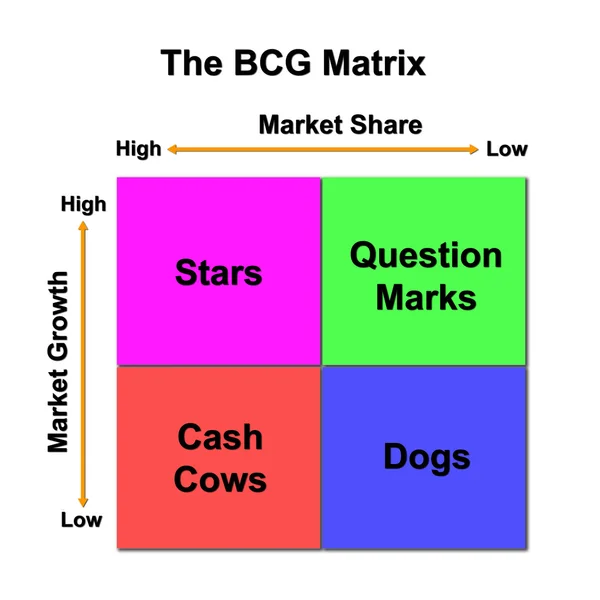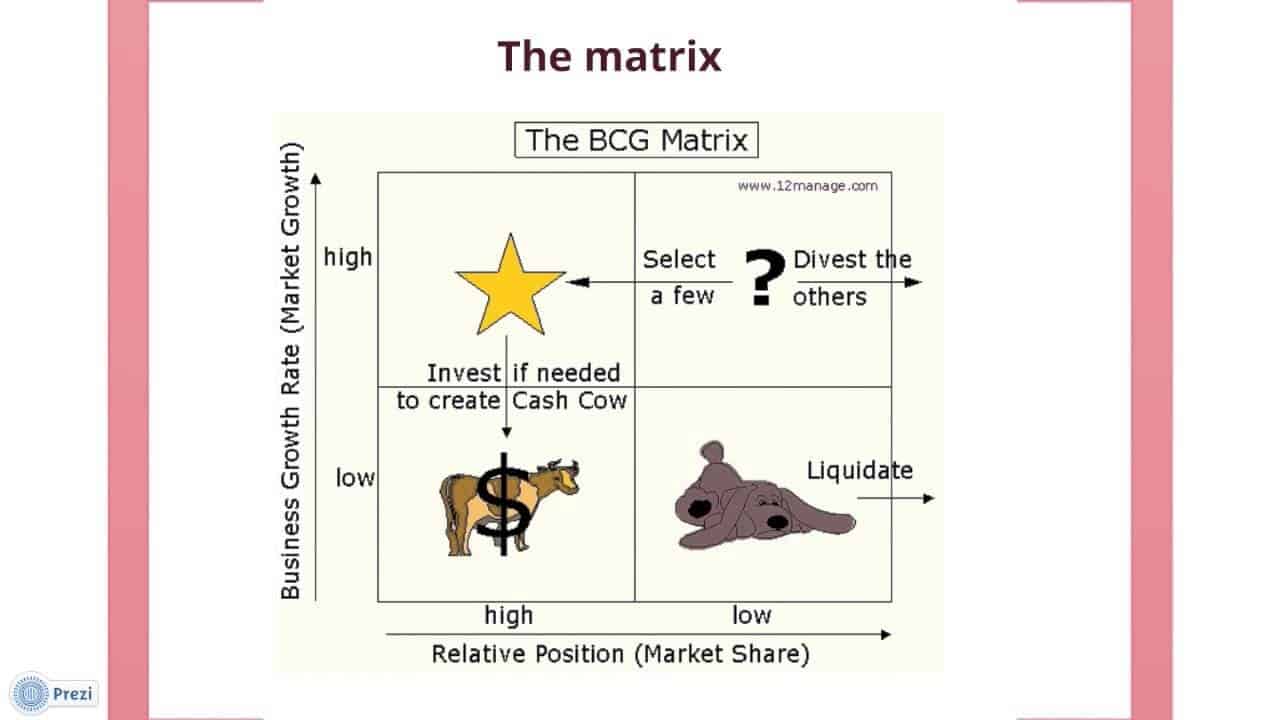

The ROI associated with these products is generally high since marketing monies are typically not invested in slow growing or ‘mature’ industries. Cash Cows (Low growth market, high market share) – These are the products that have a high market share in a low-growth industry or category.Let us now break down the resulting 4 quadrants. The product portfolio is then plotted onto the chart. In the matrix, these two metrics are represented along the two axes. Market share is the market share of the product relative to competition.

Growth is the rate at which the particular market is growing. The idea that underpins the BCG Matrix is that there are 2 large determinants of product success. In this article, we present to you a ready made template for the BCG matrix as well as basic guidelines that help you analyse your product portfolio in a visual, easily understandable layout.

Created in 1968 by BCG’s founder, Bruce Henderson, this helpful, visual framework has since garnered global acclaim and become an essential tool in a product manager’s strategy toolkit. How do you decide what products/variants should be retained, which ones to deprioritize and which ones to discontinue altogether? This is where the BCG matrix comes in handy. For companies in industries such as FMCG, or consumer durables, this portfolio can be extremely wide and complex.Īs product or category manager, one of your biggest challenges is portfolio management. These products are organized into various categories on the basis of attributes such as price positioning(popular, premium, luxury), quality perception, functionality etc. If you work as a product/brand manager in a medium to large scale organization, chances are your company has a number of products in its portfolio. The BCG matrix or the growth share matrix in its essence is a portfolio management framework that enables companies to manage their product lines.


 0 kommentar(er)
0 kommentar(er)
